It gives me great pleasure to present this portrait of professional storyteller Megan Wells as Abigail Adams. This represents the first in a series of portraits of historical women played by Megan Wells.
Megan Wells reached out to Distant Era when she saw the portraits of our mutual friend, fellow storyteller Joshua Safford. She was interested in having some of the eighteen historical women that she plays made into portraits. For Megan, one goal of this project is to feature her characters beautifully on her website and promotional materials. In addition, these portraits are to be a legacy of Megan’s work and career. We aim to evoke the essence of each character as Megan embodies her. In the end, we’ll have created a tangible visual gallery of Megan’s artistry.
Megan does all kinds of storytelling work. Just look through her website—at her resume, at her videos, at her years of interdisciplinary storytelling experience. You’ll begin to get a sense of how engaged and how skilled she is at her craft. She was the artistic director of the Ray Bradbury Storytelling Festival. She performs such a wide range of characters and stories, I can’t neatly summarize them. Instead, I’ll provide this link to her programs.
Go ahead and click on each of those links. Check out the options. Then click on the next one. Then the next one.
I’ll wait.
That’s a staggering number of characters and stories, isn’t it?
For the eighteen historical women Megan plays, she appears in full costume and acknowledges the audience, fully present and fully alive and in the space interacting in character, engaging her audience. To start our project memorializing these women in portraiture, we began with a woman whose story is inextricably woven into the fabric of America’s founding: the brilliant Abigail Adams.
Abigail Adams
How does one even begin to talk about Abigail Adams? The witty and insightful correspondence with her husband—founding father and future president John Adams—during the American Revolution have immortalized her. We can get to know Abigail Adams by her letters.
According to the Massachusetts Historical Society, John and Abigail exchanged over 1,160 letters between their courtship in 1761 and John’s political career, through 1801. You can read them on that website—the transcriptions alongside the original handwritten letters.
Long separations kept Abigail from her husband while he served the country they loved, as delegate to the Continental Congress, envoy abroad, elected officer under the Constitution. Her letters–pungent, witty, and vivid, spelled just as she spoke–detail her life in times of revolution. They tell the story of the woman who stayed at home to struggle with wartime shortages and inflation; to run the farm with a minimum of help; to teach four children when formal education was interrupted. Most of all, they tell of her loneliness without her “dearest Friend.” The “one single expression,” she said, “dwelt upon my mind and played about my Heart….”
Excerpt from Abigail Smith Adams entry from whitehouse.gov
The Power of Story
Even though we have the means to read the letters of Abigail Adams, many of us get to know Abigail best by the way she’s dramatized in our stories. But this is no surprise, as stories reach us through our emotions. Stories communicate ideas structurally, highlighting the most important details in ways we can digest, recall, and pass on, and good storytelling sticks with us. We often keep stories closer to our hearts than factual accounts.
Thus, many of us come to first know Abigail Adams by her portrayal in dramas like HBO’s John Adams; or in plays like the magnificent 1776, which features letters between Abigail and John in song. The latter story first endeared me to Abigail Adams—and John Adams too, for that matter—when Jennifer Petersen introduced me to 1776. In the last decade, we’ve seen Alexander Hamilton emerge in much the same way, thanks to Broadway and a well-told story that captured the imagination of its audience.
Stories are powerful. And Stories are important. In stories, we see ourselves reflected through the dark glass of character.
Through the masterful performance of Megan Wells, we can meet Abigail Adams again, hear her stories, and know ourselves through them. Here she is in Megan’s words for International Women’s Day.
Remember the Ladies
Yes, yes John, I understand – I do. But it’s a good title – A Declaration of Independence – yes, it quite simple but it is searing. Settle yourself to it.
Now, would you stop writing in your head, while we are walking? Could you do that? Stop your mind and listen for a moment? Could we stop walking? I want to talk to you and there is no one here to overhear what I want to say – no-one but these curious trees.
Now, I know you read my letter – but – my brilliant husband, you did not read my need so carefully woven within my words? How is it that you, of all people, do not understand the more that we ladies deserve? When we you everything? Fom the moment we say our vows, we grant you our worldly goods, all our inherited properties, our very lives John — every sweating labor of our hands, the dangers of childbearing, the exhaustion of their care. Then at the end of all that, when the moon is high, we give you our beauty in the softness of our bodies – for what? Relinquishing all our individual rights? For what? To be beaten at the slightest provocation? I know you saw LouEllen’s bruise in church today. I saw William corner you, did he confess his rancor?
“She talked back to me. What did she expect? Pushing me that hard? She deserved it! I gave her a good backhand – and I don’t regret it.”
God forbid we should interfere with a man’s right to discipline his wife! Why, we protect our domestic animals with more laws than our ladies!
I will accept that this Declaration will grant “all men are created equal” knowing fully what it does not mean. I know we ladies must bite our tongues and wait for some brave soul in the distance reaches of the future to see us all as one human family – but John Adams, look at me! Be the man I know you to be. I am asking you in the Declaration of Independence to remember the ladies.
Megan Wells as Abigail Adams
An Ideal Subject
Megan knows the women she plays so well, and she engages in their physicality and presence so well that I did little coaching or direction during our first session unless it had to do with moving her slightly into frame or light. Every shot was alive and present, with Megan adjusting slightly with each one, for variation. Megan truly embodies her characters, and when she tells a story, she sees it happening before her, and then you see it with her as she gestures and raises her voice and paints pictures with words. As we were preparing for our session, I asked about the fairy tale she said she’d told at a bar that week, and she described an Arthurian tale from Bullfinch that I’d never heard before, and even as she described what the story was about, I knew I was in the presence of a master.
Our very first shot of Abigail would have worked, and by the second shot, we felt we had it. Then we went on shooting for variety. As the first of our historical women, Abigail made an excellent start to our day.
Letters from History: 1770s BC to 1770s AD
In Megan’s work, we can see how much we have in common with these women from history—how similar our cares and concerns continue to be, generation after generation, century after century. The more we change, the more we stay the same. As I wrote this post and read through Abigail’s letters, I couldn’t help but notice how similar they were to letters from some of history’s earliest written records, where a husband and wife write to one another on cuneiform tablets two thousand years earlier, expressing familiar concerns.
To illustrate this, here’s a transcription of part of Abigail Addams’s letter to John in June 1776 (AD), followed by a quote from The History of the Ancient World, by Susan Wise Bauer, in which Bauer describes a similar letter between an ancient statesman and his wife, circa 1770 BC.
Abigail Adams to John Adams, 1776 AD
“I received by Mr. Church a few lines from you; I wish to hear from you every opportunity tho you say no more than that you are well. I feel concernd least your cloaths should go to rags having nobody to take any care of you in your long absence, and then you have not with you a proper change for the Seasons. However you must do the best you can. I have a suit of homespun for you whenever you return. I cannot avoid sometimes repineing that the gifts of fortune were not bestowed upon us, that I might have injoyed the happiness of spending my days with my Partner. But as it is, I think it my duty to attend with frugality and oeconomy to our own private affairs, and if I cannot add to our Little Substance yet see that it is not diminished. I should enjoy but little comfort in a state of Idleness, and uselessness. Here I can serve my partner, my family and myself, and injoy the Satisfaction of your serving your Country.
I wish you would write me what I had best do with our House at Boston. I would advertise it if you think best. There are so many Houses torn to peices and so many others abused that I might stand a chance of Letting it perhaps as it is in so good repair
—Letter from Abigail Adams to John Adams, 3 June 1776. Massachusetts Historical Society.
Shiptu to Zimri-Lim, 1770 BC
It was not easy to be a petty king in the ancient Near East. Zimri-Lim spends half of his time fighting the kings of other cities, and the other half trying to negotiate his complicated personal life. His queen, competent and politically astute Shiptu, runs the city of Mari while her husband goes off to fight yet another war. She writes to him, in the height of a Mediterranean summer, “Be sure to take care of yourself when you are in the full rays of the sun!…Wear the robe and cloak that I have made for you!…My heart has been greatly alarmed; write me and tell me that you are safe!” And Zimri-Lim writes back: “The enemy has not threatened me with weapons. All is well. Let your heart no longer be afflicted.” In thousands of cuneiform tablets unearthed on the banks of the Euphrates, Zimri-Lim emerges both as a typical Mesopotamian king, and as an individual: a much-married man with little talent for fatherhood.
Bauer, Susan Wise. The History of the Ancient World: From the Earliest Accounts to the Fall of Rome (p. 29). W. W. Norton & Company. Kindle Edition.
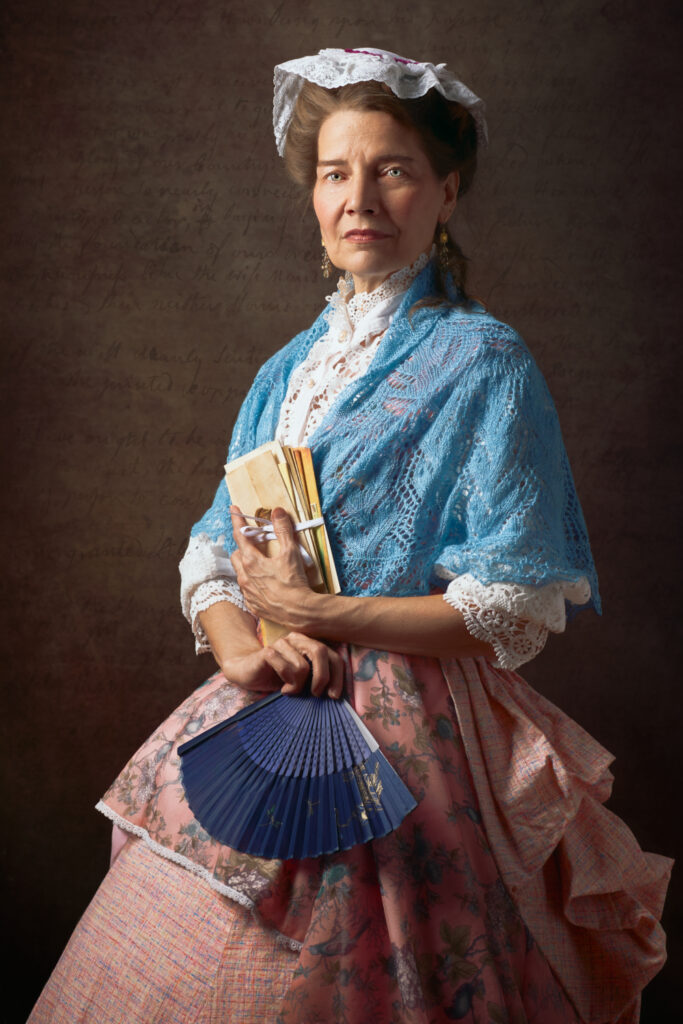
Inspired by these letters, here’s Abigail’s portrait, beautifully portrayed by Megan Wells. Here, Abigail holds John’s letters in her hand, close to her heart. The background texture is one of her 1776 letters, courtesy of the Massachusetts Historical Society.

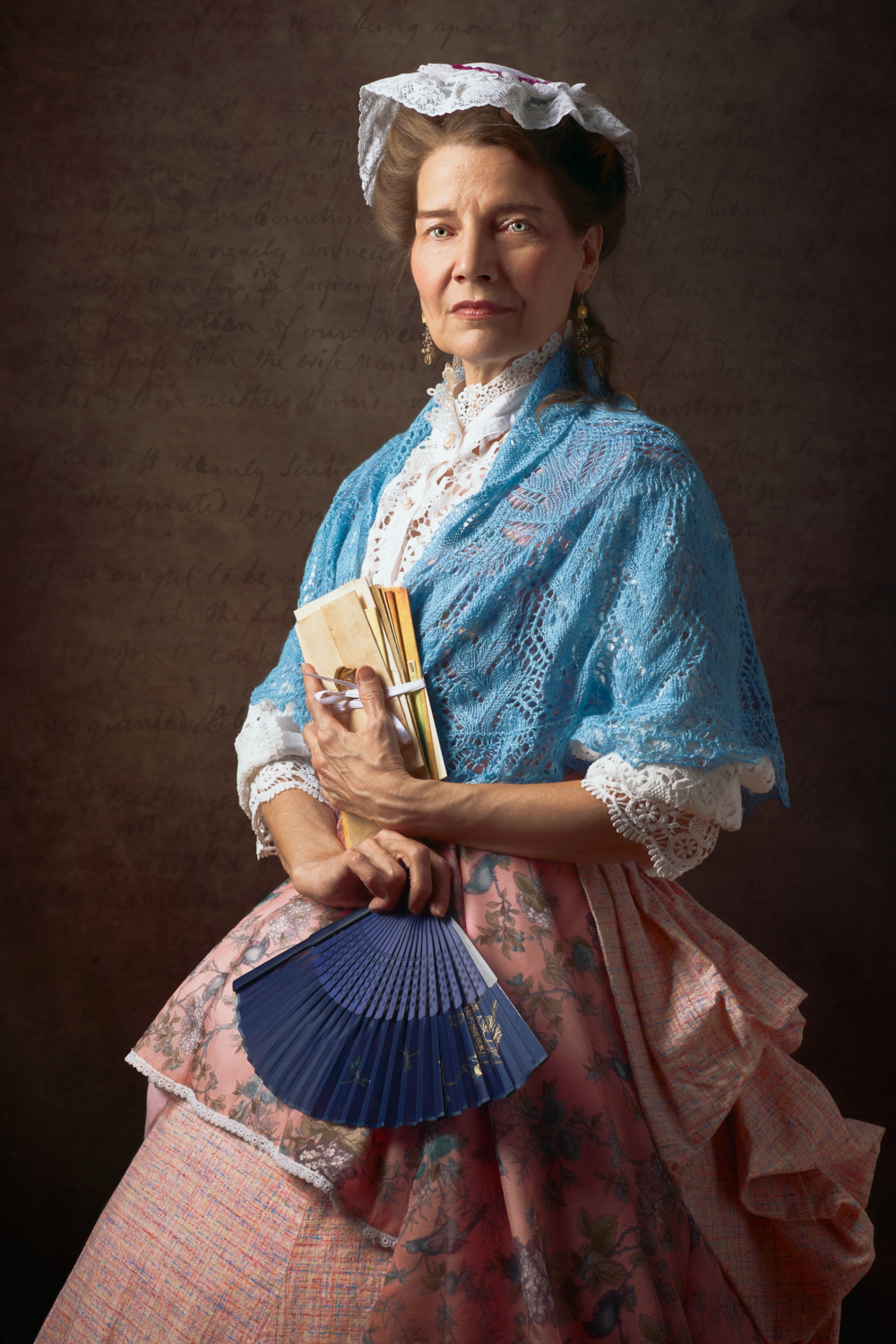

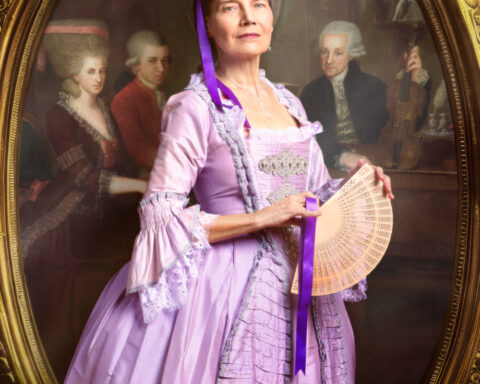
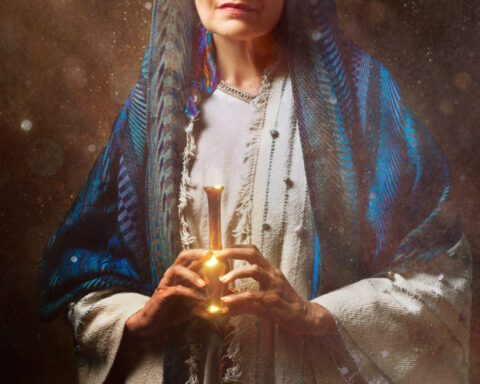

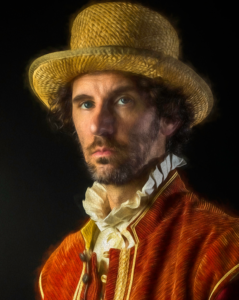

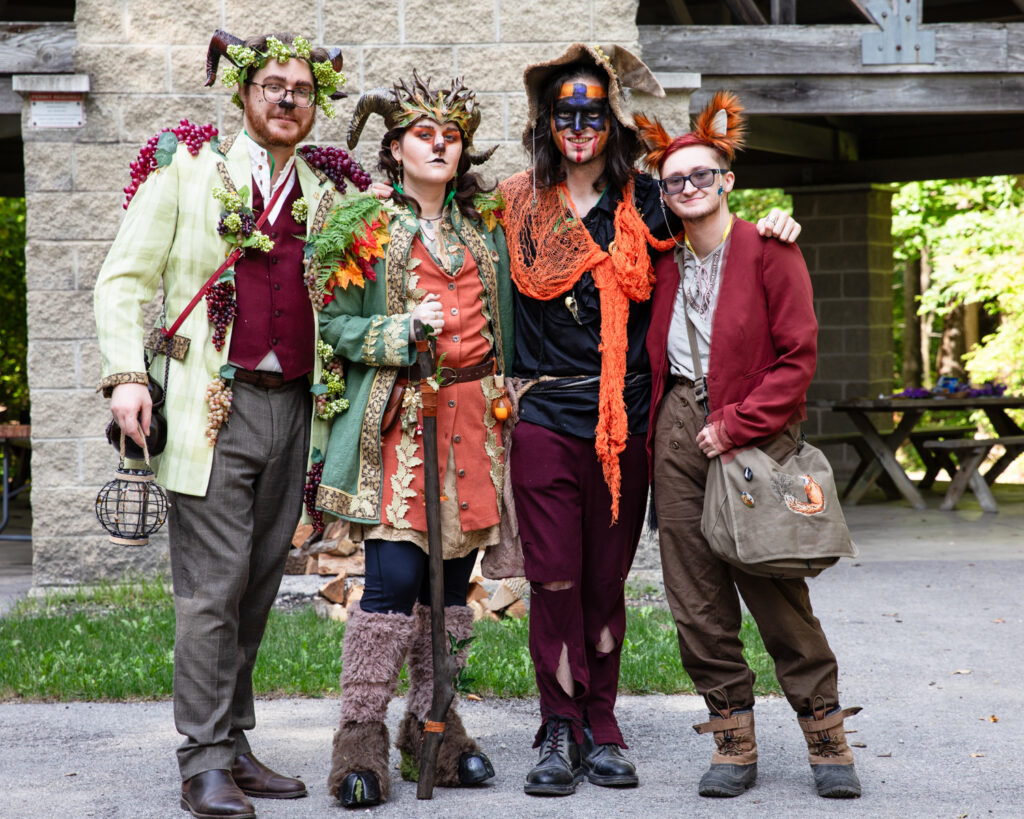
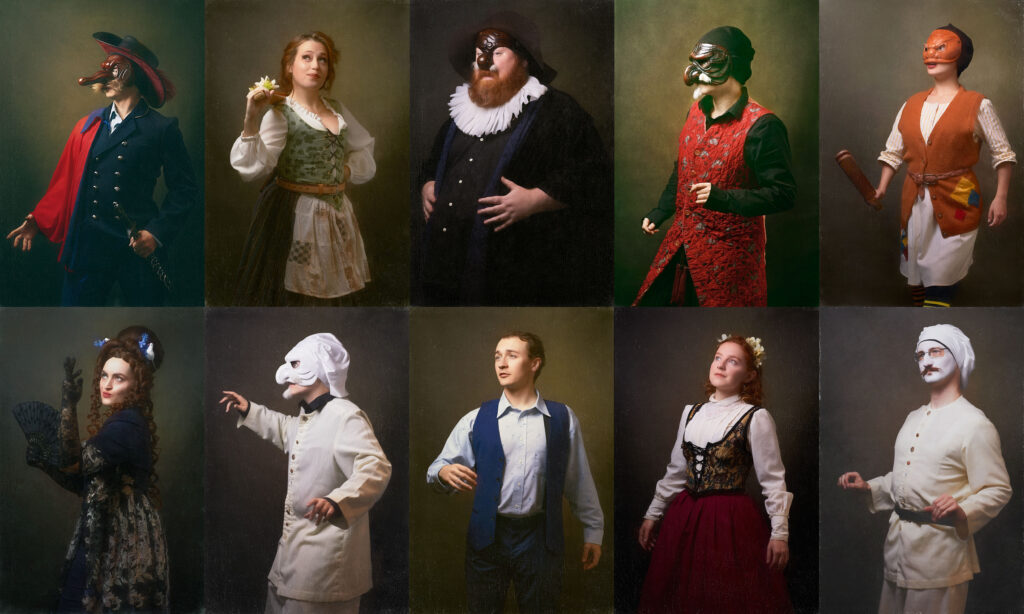
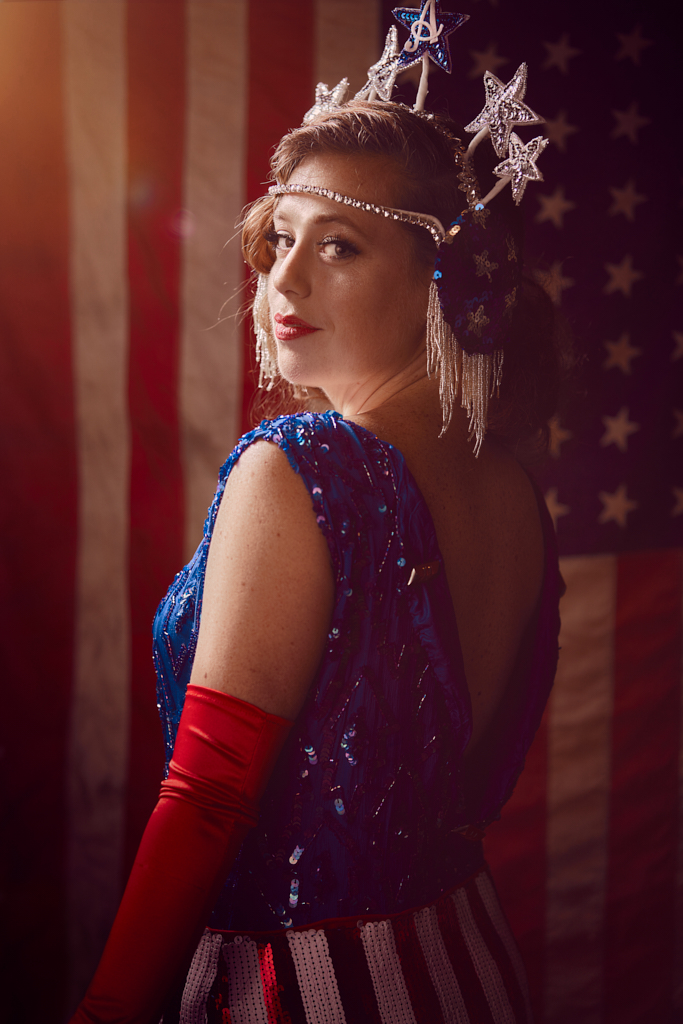
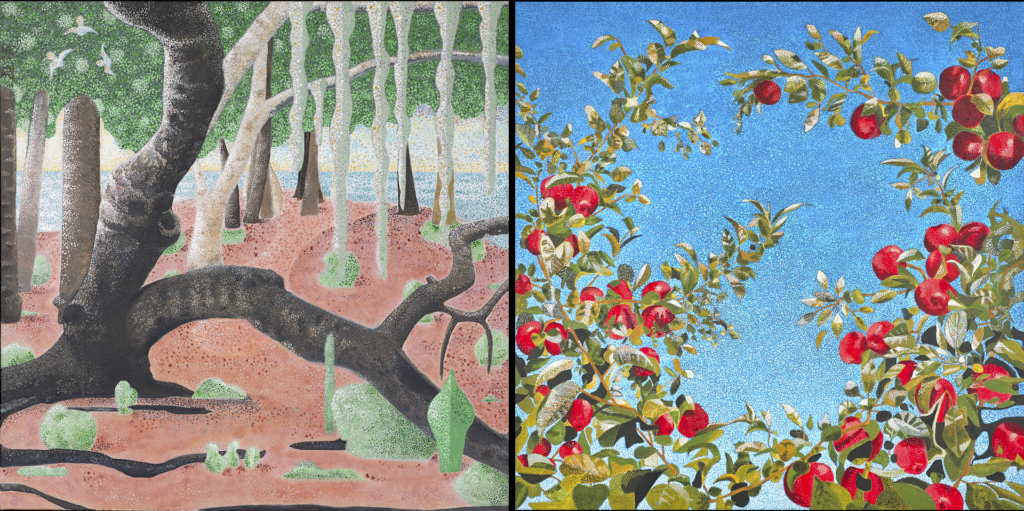
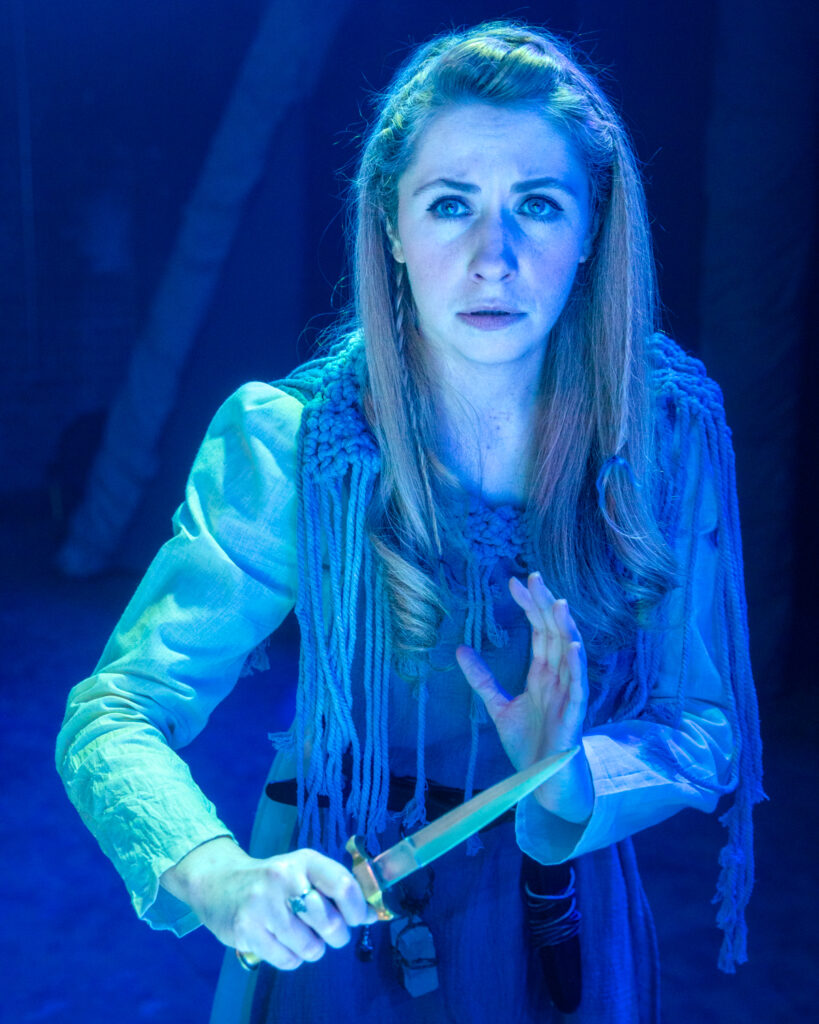
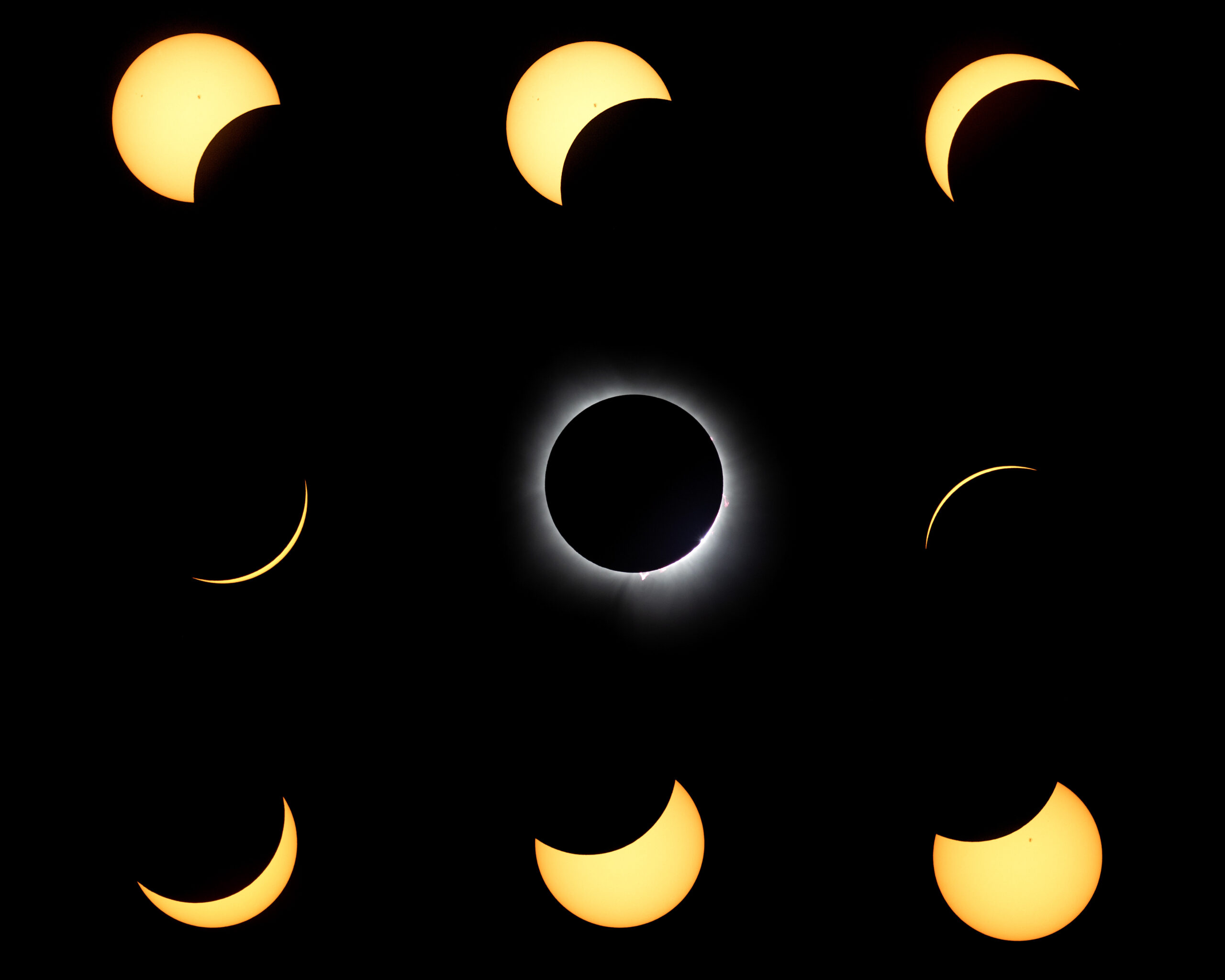
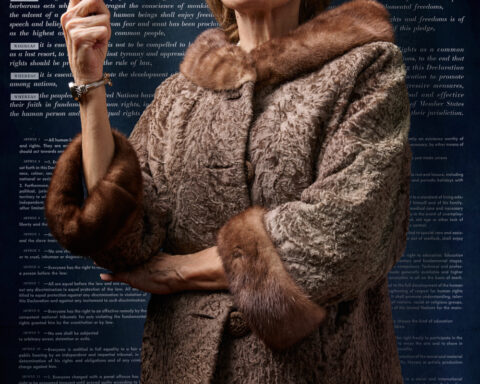
Follow Me